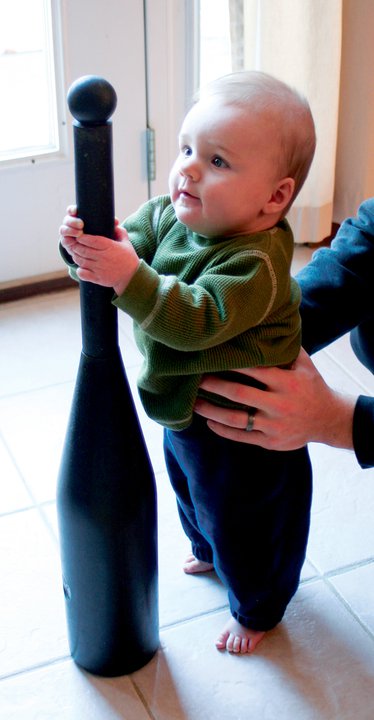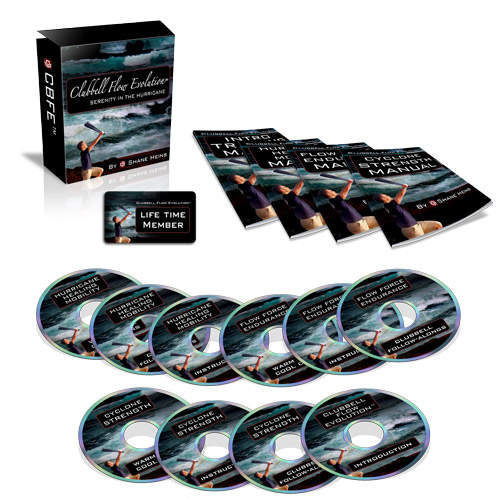Some Lessons I’ve Learned About Clubbell Training From a Few of my Client’s Most Common Mistakes

Every once in a blue moon, I’d get a call from someone who was looking for some clubbell instruction. These were almost always health and fitness professionals who were planning to attend a CST, TACFIT, or clubbell training seminar. So they’d usually drive a few to several hours to meet me at a local park or training studio here in small-town New Hampshire, and we’d swing some clubs for an hour or three – often grabbing lunch afterward. And I’ve loved every minute of it because clubbell training is really fun. Not to mention working with driven people who are planning to get certified in this discipline. You know, real go-getters.
Now, at one of these more recent sessions, it dawned on me that almost everyone I’ve ever coached in clubbell training has made the same three mistakes, which led to them contacting me for help. And so, I thought I’d share them with you so that hopefully you can avoid making them yourself.
 So, first off, in all but two cases, every single clubbell training client of mine said they originally bought heavier clubbells than they could handle. They made the mistake of buying the heaviest clubbells they thought they could handle instead of the lightest ones they knew they could handle. This might or might not be an indication of anything, but men tended to make this mistake more than women. Like, a lot more. In fact, I heard a similar story from several men…
So, first off, in all but two cases, every single clubbell training client of mine said they originally bought heavier clubbells than they could handle. They made the mistake of buying the heaviest clubbells they thought they could handle instead of the lightest ones they knew they could handle. This might or might not be an indication of anything, but men tended to make this mistake more than women. Like, a lot more. In fact, I heard a similar story from several men…
“I’m a pretty strong guy…been using kettlebells for years…did some powerlifting/strongman/oly-lifting/ etc. back in the day…can swing a macebell like a tennis racket… and so I bought a pair of 25 pounders and also a single 45 pounder thinking that they would match my strength levels…and I could barely get them out of the box…as soon as I finally picked them up, I knew I had made a big mistake.”
And that mistake is going too heavy, too soon. So, most of these guys went on to buy a pair of 15 pounders, which is what they should have bought in the first place (and they knew they should have!). A couple of them even confided in me that they had even considered dropping down to 10’s (gasp!), which is not a bad idea for some trainees if you ask me (remember that I started with a pair of 5 pounders). But after a little bit of work, every one of these guys realized they could handle the 15 pounders just fine – once they got some coaching.
So, the first mistake to avoid is buying clubbells that are too heavy. When in doubt, go lighter.
Speaking of men, these guys who buy heavier clubbells aren’t as bad off as the guys who make their own club swinging equipment. Aye yie yie! These guys are just asking for trouble. And believe me, I’ve heard some stories…
“I swiped my kneecap… cracked my head open… shattered my TV into a million pieces… knocked out my pet walrus…”
Yes, I know guys who have built their own clubs in all sorts of configurations and with all sorts of materials such as concrete molds, steel plates, and sand-filled plastic bats to name a few. And these homemade options are a really – REALLY – bad idea. Trust me. I explain why in my clubbell review, if you’re interested.
Now, to be fair, a lot of workout equipment can be substituted with a homemade version – particularly some of the gimmicky exercise equipment out there. And many times, a homemade substitute can work just as well, or even better than a certain kind of exercise equipment. For example, you don’t necessarily need to spend $200 on a suspension training system when a pair of straps and some hardware will suffice. However, this is not the case with clubbells. So, don’t build your own club swinging equipment. Just don’t. Invest in quality. And that means only authentic CST clubbells.
Now, something else I’ve learned is that the single-greatest and most common limiting factor when it comes to my clubbell training clients is a lack of mobility. A lot of people struggle with an exercise like the clubbell mill, and think it’s because their technique needs to improve. Oftentimes, that is exactly the case, but it’s only half of the story. You see, more often than not, their technique in any given exercise is poor because they simply cannot perform that movement through that range of motion yet – even without a clubbell! And I witness this when I assess them with basic joint mobility exercises. For example, if they can’t move their shoulder into that range of motion without a weight in an open-chain mobility exercise like arm/shoulder circles, then what makes them think they can do it while swinging a clubbell through that ROM? And worse yet is the idea of forcing the ROM by adding load.
“Maybe if I swing a heavy weight through that ROM, things will open up.” Well, maybe. But more than likely, it’s going to “open up” by straining, pulling, tearing, or otherwise damaging the joint or surrounding connective tissue and musculature.
So, honor your body and respect the process of changing it. Don’t try to force it. And do your mobility work for goodness sake!
Note: one of the best joint mobility and range of motion training packages currently available is here: Joint Mobility Training Package.
Which leads me to my final point: the best thing you can do to maximize your success in clubbell training is to get help when you need it, or even better, before you need it. So, don’t rush into it. Get your questions answered. Invest in quality equipment and training. Get a solid clubbell training program to follow. Videotape yourself. Hire an instructor. And attend a seminar, if you can.
But hey, you know all of this stuff already. Just do it right.
Click Here to Learn More About Clubbells
If you found this article helpful, please share it with your friends and tweeps:
.jpg)
![]()
Health-First Fitness Coach
P.S. If you liked this post, then please signup for the newsletter, or follow me on Facebook or Twitter for daily updates and other interesting info.
P.P.S. If you’re wondering which clubbell training program is the best one, take it from someone who owns and has used them all. I’ve reviewed every single clubbell training product ever released, and I’ve come to the conclusion that Shane Heins’ Clubbell Flow Evolution program is hands-down the best clubbell instructional material there is, and by far the best value out of everything currently available.
Seriously, this is a must-have for anyone who is thinking about getting into clubbell training – whether for casual recreation or serious training. It’s the go-to program – actually 3 programs in 1 product – and I stand behind it 100%. Learn more about it in my complete product review here: Clubbell Flow Evolution.
